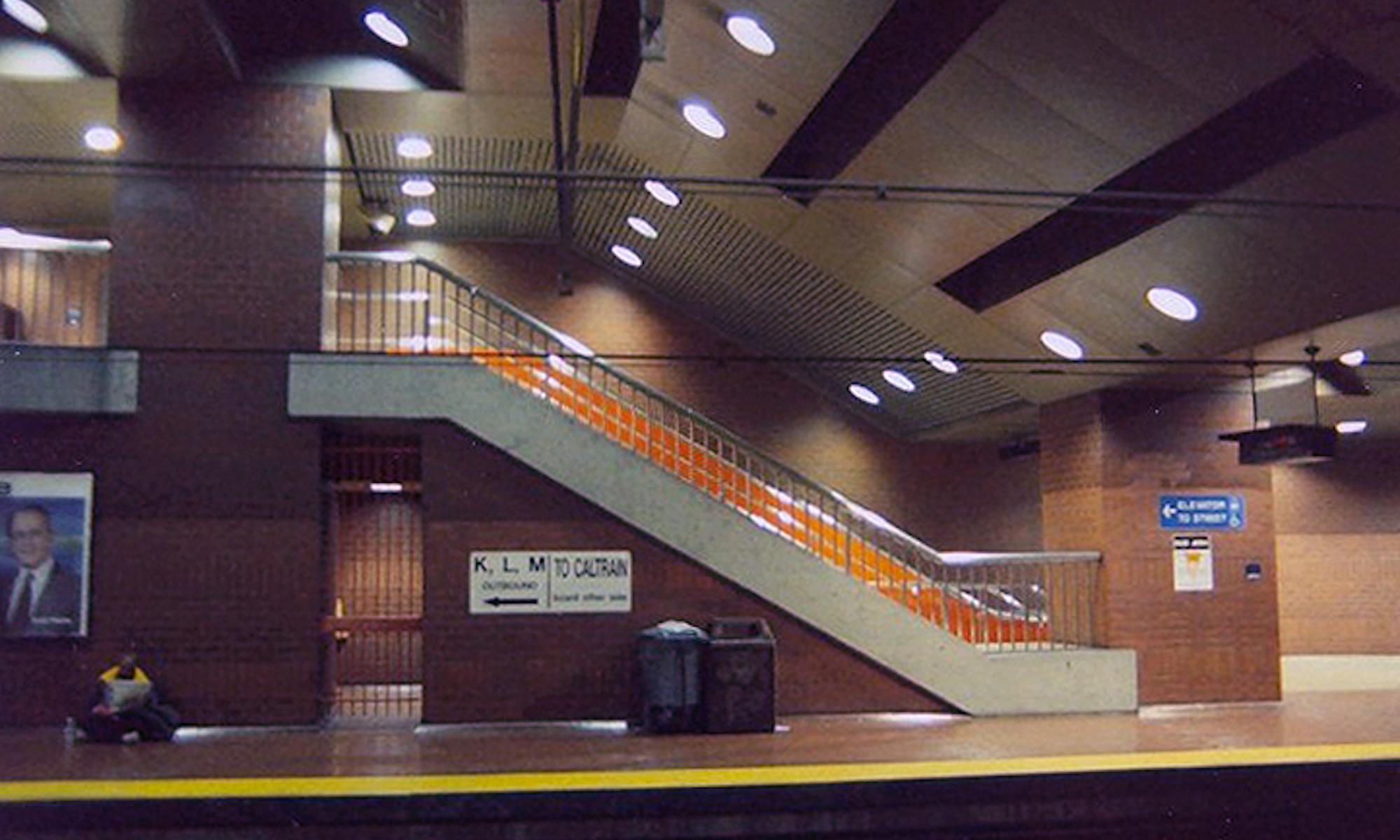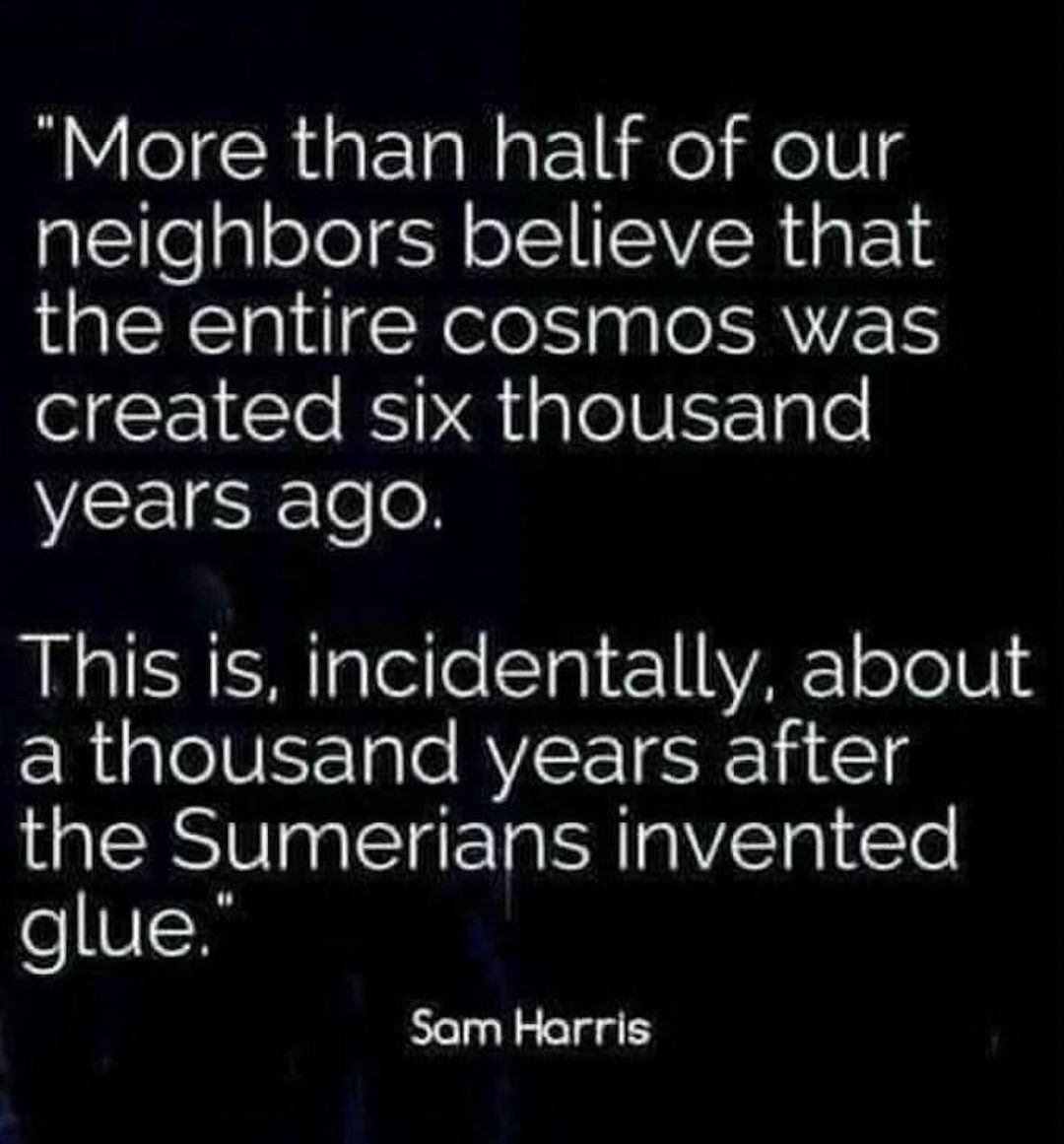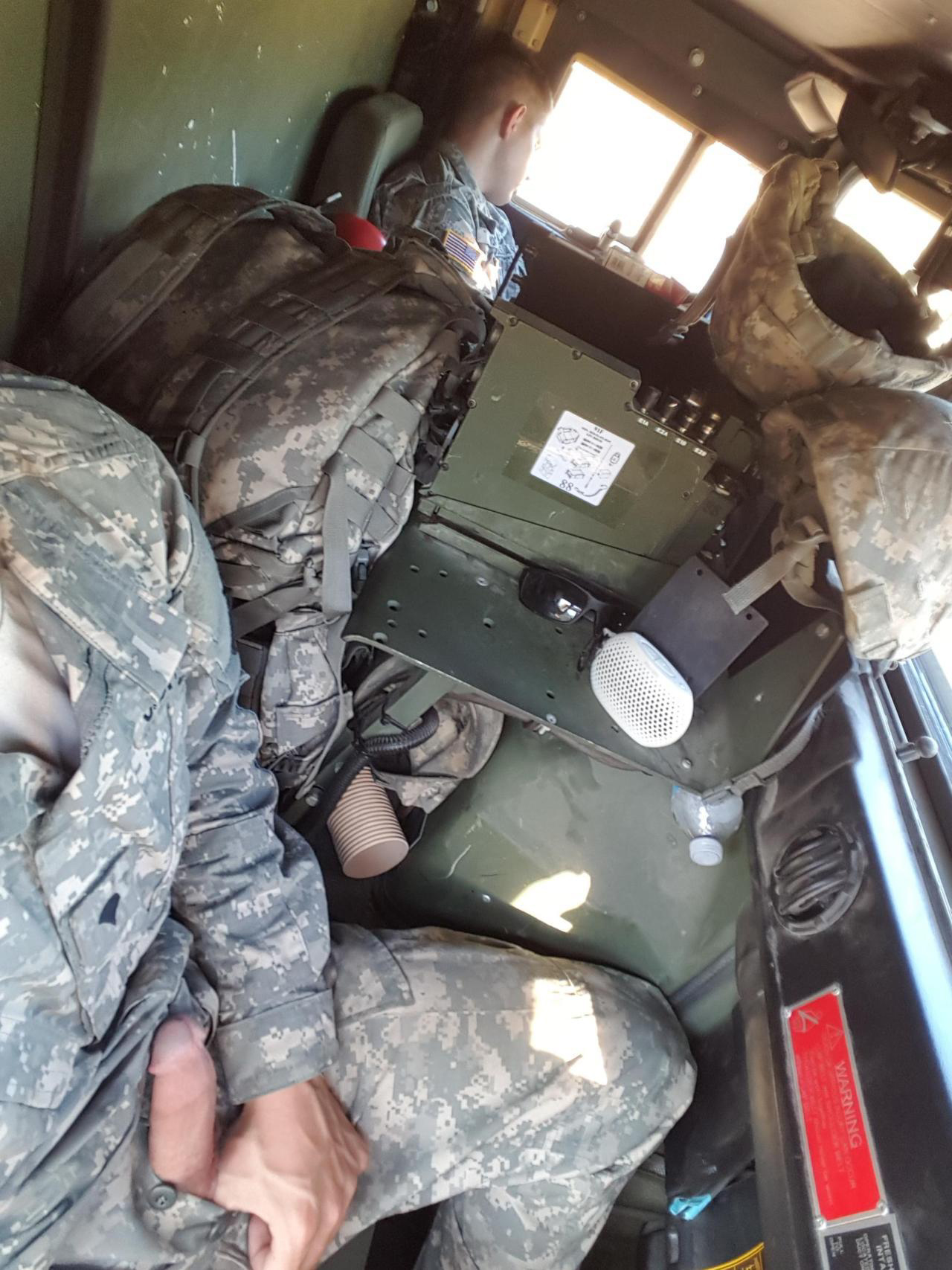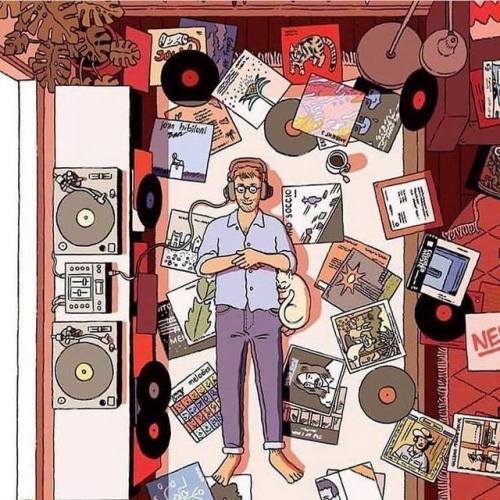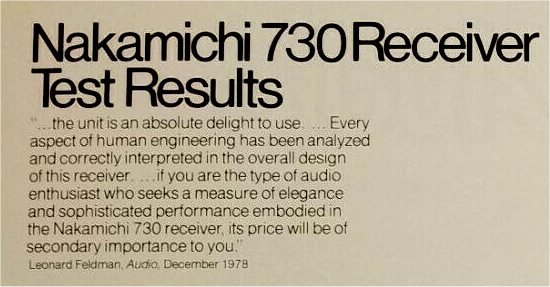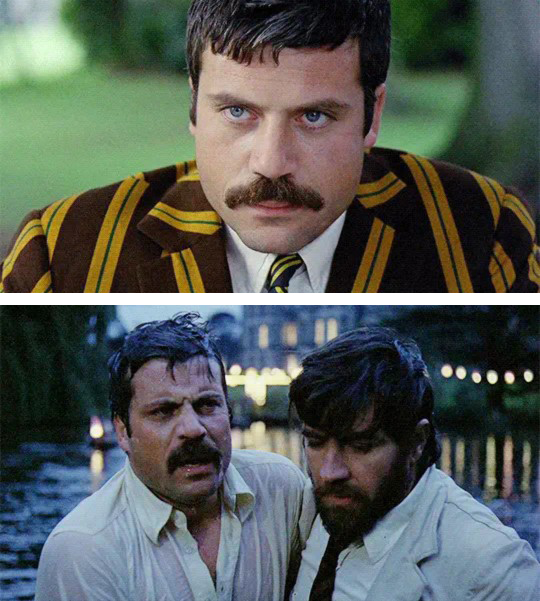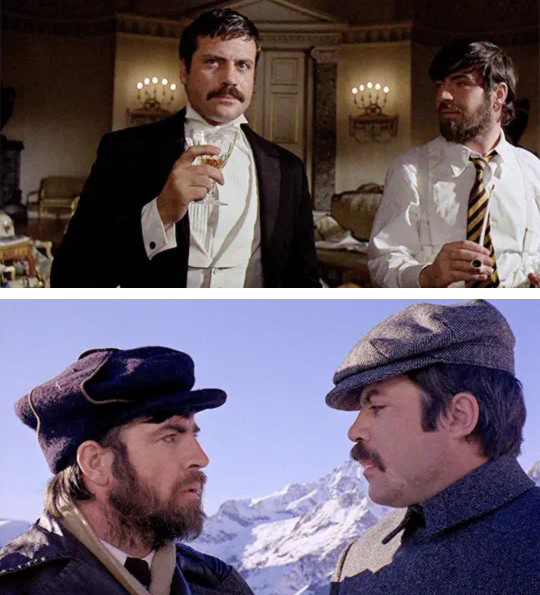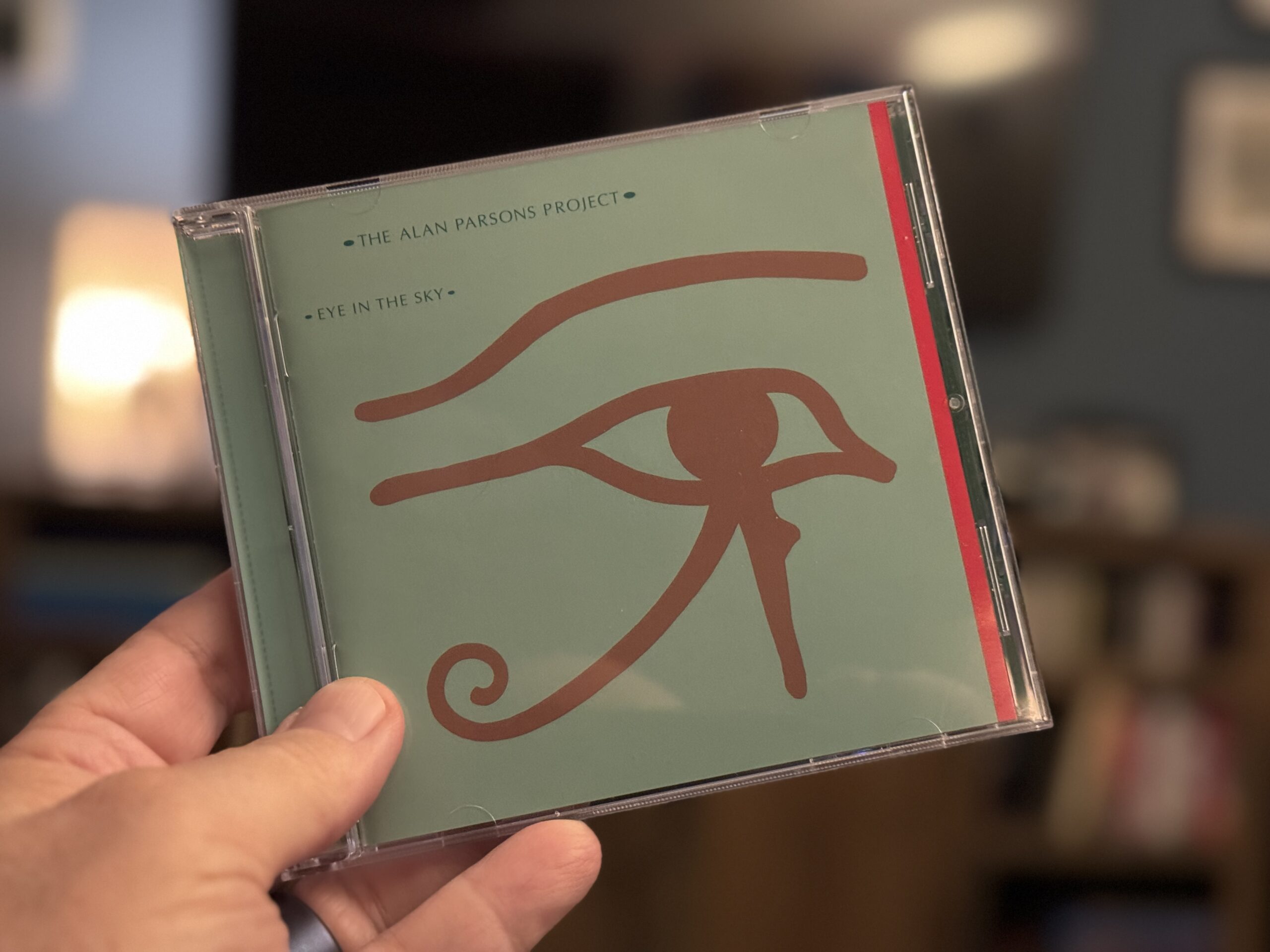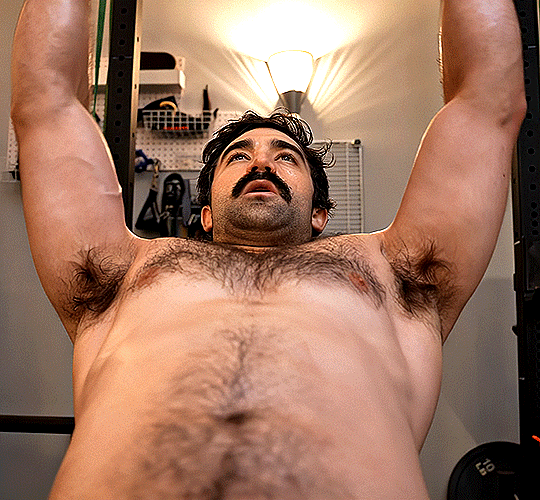😐
Quote of the Day
I Never Seem To Get a Second Interview… 🤣
😂 😂 😂
So True…
Right?
Pro Tip
365 Days of UNF: Day 316
Certainly Seems That Way
Truth!
365 Days of UNF: Day 315
Boys Will Be Boys
In My Happy Place
In 1978, This Was The Future
When I first saw one of these back in late 70s, I'm sure I popped a woody. It was the beginning of the "micro" or "mini" components (forever exemplified in my own mind by Technics C01 series). The receiver wars were winding down and HUGE was out. SMALL and sexy was in.
There's no denying the fact that the Nak 730 was sexy. While fully digital tuning was still a couple years away, the fact that the tuning meter was motorized, and a majority of the switches were touch-control was orgasm-inducing in audio enthusiasts such as myself.
Alas, like any number of other hi-fi components I lusted after at the time, at $1400 (approximately $6500 in today's dollars) it was hopelessly out of reach. But that didn't stop me from admiring from afar.
From Classic Receivers:
Nakamichi 730

This Nakamichi 730 came out at the beginning of the transition period when audio manufacturers were moving from silver faced analog equipment housed in wood cabinets to black metal cased, LED lit, computer run equipment. This may not have been everyone's top choice for most beautiful receiver but it was definitely ahead of its time and performed like a champion. The 730 retailed for a whopping $1390 and production ended around 1982.
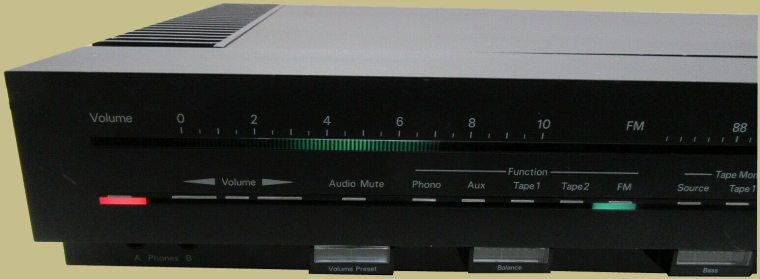
Introduced in 1978 the Nakamichi 730 produces 105 watts per channel into 8 ohms. It's no lightweight stereo. Its 38 pounds are fit snugly into a slim case that measures about 20″ wide, 15″ deep, and only 3.75″ tall. There are no mechanical buttons on the 730. All the of the switches on the front panel are touch sensitive. With the matte black case and red and green lighting it's a very high tech looking piece of transitional era equipment.
The narrow slot along the entire length of the top half of the receiver houses the illuminated green stripe volume filter and the linear calibrated FM dial scale. It also has four station presets, Dolby FM, Muting and a High Blend function. The high blend control blends stereo with mono. It is able to reduce hiss on weak signals by utilizing most of the signal in stereo with the exception of the higher frequencies which are mono. The controls just below the station preset sensors are fine tuning controls for each preset station.

The four sliders along the bottom are a pre-set volume contour control, Bass and Treble controls and an FM muting threshold control. The volume contour control adjusts the sensitivity of the main volume control. There are also two stereo headphone jacks at the bottom left of the receiver (yes, two!).
The volume control is motorized as is the FM tuner. Touch the tuning sensor and a small motor turns the tuning capacitor. While other manufacturers were moving toward FM tuners with no moving parts, Nakamichi concluded that the old way was better and used a conventional tuning capacitor but modernized it with the touch sensitive control and motorized movement. Strangely the 730 has an AM/FM tuning gang inside even though it is an FM only receiver. The designers actually use the AM capacitance to tell the built in logic circuit when the main FM tuning section has reached the exact preset station. So, they basically use the AM tuner to tell the circuit when the FM tuning is precisely located at one of the four preset stations. Ingenious.
Specifications:
- Tuning range: FM
- Power output: 105 watts per channel into 8Ω (stereo)
- Frequency response: 10Hz to 30kHz
- Total harmonic distortion: 0.02%
- Damping factor: 100
- Input sensitivity: 2mV (MM), 100mV (line)
- Signal to noise ratio: 83dB (MM), 94dB (line)
- Channel separation: 70dB (MM), 70dB (line)
- Output: 100mV (line), 1V (Pre out)
- Dimensions: 500 x 90 x 370mm
- Weight: 17.2kg
- Year: 1978
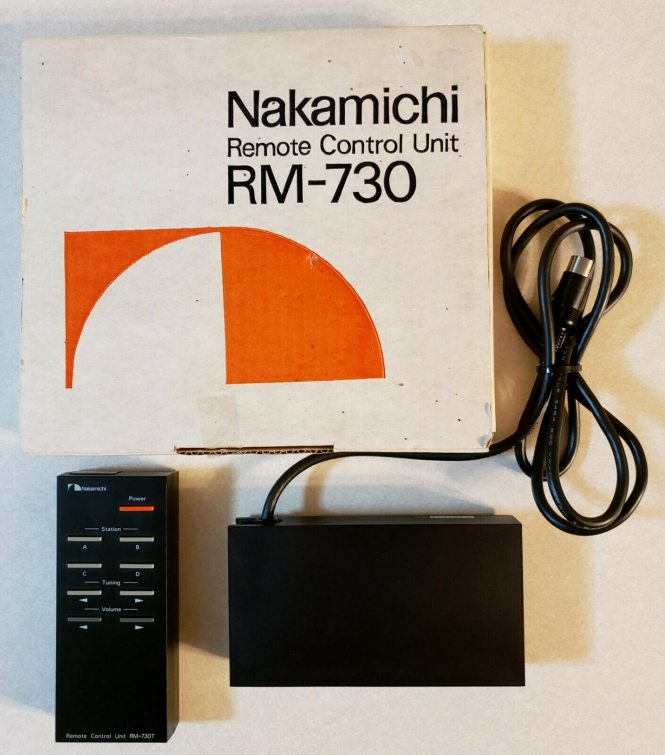
The Nakamichi 730 was sold with a wireless remote control unit, the RM-730.
Working on the 730 is not for the faint of heart. There are no visible fasteners on the front, side or top panels. Instead there is a plug on the rear left of the unit. Remove the plug and you'll see a screw. Turn the screw and the side panel will release. Then you will find the screws to the top panel.
Look at that transformer and the two huge 63V 15,000 mF power supply caps! As you can see, the power supply section is shielded. Overall great build quality, but not easy to work on.
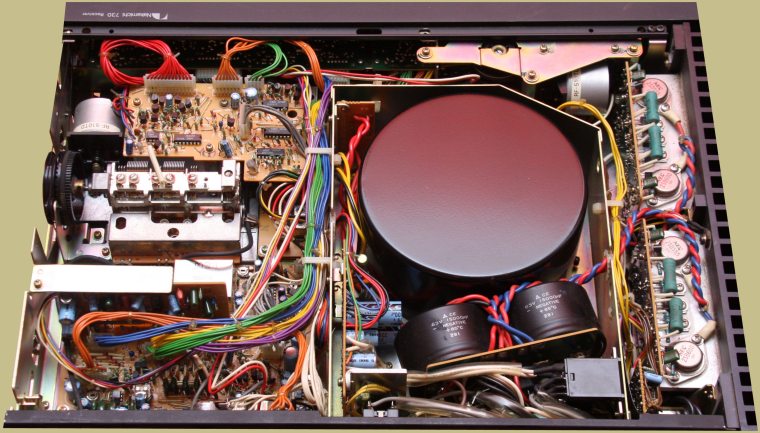
Some issues related to the 730 are that the slider pots can get dirty and the bulbs tend to burn out. By removing the front panel you can access all the bulbs. The original bulbs are 12v 3mm 60mA. Many times the remote is missing as well and they are not cheap to replace. However some of the newer universal remotes may work.
The knob on the back just above the jumpers controls the record-out levels when recording to a tape deck. There is also a master power on/off switch and a couple AC receptacles. The master power switch is usually left on so that the remote control box can supply power to rest of the stereo. The receiver also has pre-out/main-in jacks, so you can separate the preamp from the power amp. As you can see the 730 will only accommodate one pair of speakers.

The Nakamichi 730 is a great receiver. If you like the its style and can find one in good working order, especially with the original remote, then you should acquire it. You won't be disappointed.
Audio magazine was apparently quite impressed, although somewhat bewildered by this unconventional design:






What Movie Confirmed For You That You Were Indeed Gay?
Feeling a Man's Balls on Your Skin
The San Franicsco of my Dreams
Though it's been twenty years since I moved away, I still often visit San Francisco…in my dreams.
The City that exists there is a strange, twisted version of reality, and my visits are usually prompted by having run across a particularly nostalgic photo online that day.

Most of those visits take place in the City at night (the photo above almost completely captures the vibe of these dreams) and usually in the Castro/ Upper Market area—if not exactly on the last street I lived before leaving. Streets are skewed. Getting from one point to another is…off. There are dirt roads in the heart of the City. Hills exist where there are none. I stumble across entire neighborhoods that I never knew existed—and only exist in that realm. Mission Street runs at a strange diagonal to other streets in the area and is bordered by multi-story Victorian buildings for its entire length.
Other times I find myself downtown, South of Market, or walking in absolutely cavernous underground MUNI tunnels between stations. I sometimes find myself on a MUNI train, encountering stations that do not exist in real life. My mind writes these obvious anomalies off by saying, "Oh, this must be that new station/line they opened."
The common thread that seems to run through these dreams is that of photography, or rather my inability to photograph anything I see. I come across the setting sun glinting off a building and think, "That's a fantastic shot!" and without fail my phone malfunctions. By the time I do get it working, the perfect shot has passed. I can't tell you how many absolutely gorgeous photos have been lost because the dream phone starts acting wonky. It's almost like I know I'm in a dream and think that if only I can photograph what I see and bring it back on my phone, it will prove I was really there.
365 Days of UNF: Day 314
#Underappreciated
The Only Way To Handle Scammer Texts
Get In There
If You Ever Question Your Parenting Skills…
Post Election Analysis
Triptych
Thursday In The Office
Released 49 Years Ago Today
https://youtu.be/hmIFcekpyBY
Carpenters: Horizon (1974)
What struck me most about this album back in the day was the audio quality. I don't know what magic the recording engineers used, but Karen's voice was crystal clear and it seemed you could hear every instrument used in the arrangements.
Their take on "Please Mr. Postman" remains one of my favorites.
